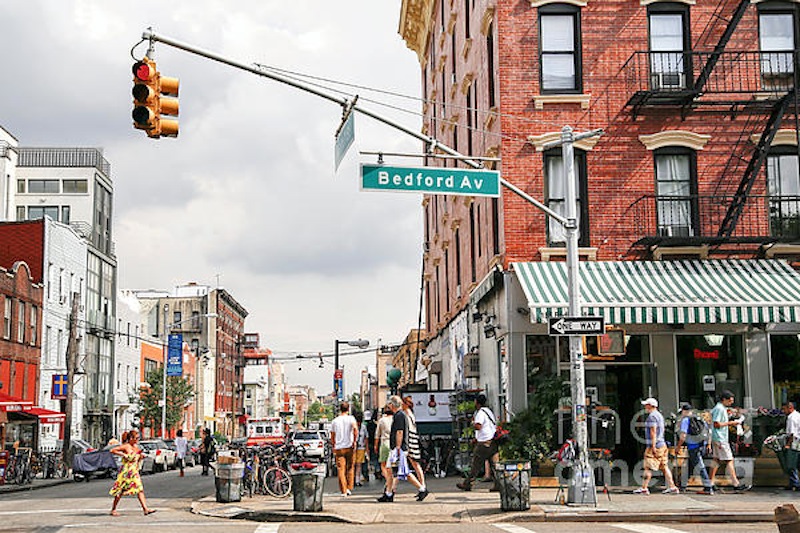
Have you ever just walked down your street and the shop that used to sell 50 cent tacos has suddenly turned into a cold pressed juice bar? Or how about a health food store where the cheapest item is an 8 oz bag of chips going for $5.00 because it’s “organic”. This is just a small sliver of what is happening in the United States’ major cities such as Los Angeles, and especially Chicago and New York City. All the people of color and citizens who have lived in the same areas are being pushed out. This is due to the growing popularity of urban living, especially among white people. This is odd because there was a point when predominantly white people were trying to move away from the urban cities and raise their families in the suburbs, away from what they thought was crime and turmoil. But now that the cities have been growing economically and are appealing in pop culture, the great grandchildren of those people are returning to the cities and taking over.
I’m from the Chicago land area, specifically the northern suburbs about 45 minutes north of the city. I have not seen gentrification on the level that it seems that Harlem and Brooklyn are experiencing. But, in Chicago there are areas it does not seem that nonnatives will go because of perceived danger, however, slowly but surely it is changing. Sandwiched between the older apartment buildings, low-rise and mid-rise condos are popping up contrasting and intruding against the uniform apartment buildings and the skyline. Whole Foods stores are popping up on every corner and pushing out small business owners who had been there for decades, many of them even witnessing the 1968 Chicago riots. In the city of Chicago, building owners are allowed to change rent pricing and rent controlled apartments seem to be far in between. So many of the buildings implement a rent increase which drives many of the residents, most of them people of color, and either leaves them with no place to go or displaces them to the outer suburbs. This is why so many of these modern buildings are popping up because once all the lower-class residents are evicted, the building owners sell the buildings to developers who then tear them down to create these modern apartments.
 Something similar is happening in New York City. The city is experiencing economic growth, which is great, but at the cost of many residents not being able to find affordable living. University of California, Berkley, researchers have found that 12% of low-income neighborhoods in New York City are experiencing either ongoing or advanced forms of gentrification; while 9% are being forced to leave their homes as a result of displacement without actually experiencing any form of gentrification at all. As a result, many of the displaced residents cannot find housing in the suburbs either as they have already been gentrified and are found to be exclusionary toward low-income residents. The cause for developers’ vulture-like growing interest in these low-income areas is because many of them can receive a tax incentive for privately investing in low-income areas. These areas are labeled “opportunity zones”. Berkley reports that 23% of these areas are located in gentrifying neighborhoods, while 30% are located in neighborhoods that are at risk of gentrification.
Something similar is happening in New York City. The city is experiencing economic growth, which is great, but at the cost of many residents not being able to find affordable living. University of California, Berkley, researchers have found that 12% of low-income neighborhoods in New York City are experiencing either ongoing or advanced forms of gentrification; while 9% are being forced to leave their homes as a result of displacement without actually experiencing any form of gentrification at all. As a result, many of the displaced residents cannot find housing in the suburbs either as they have already been gentrified and are found to be exclusionary toward low-income residents. The cause for developers’ vulture-like growing interest in these low-income areas is because many of them can receive a tax incentive for privately investing in low-income areas. These areas are labeled “opportunity zones”. Berkley reports that 23% of these areas are located in gentrifying neighborhoods, while 30% are located in neighborhoods that are at risk of gentrification.

I’ve currently been visiting New York and my mom joked that I’ve only been here a few days so what
would I know about gentrification of this specific city I’ve never been to before. The answer to that is that I have eyes. Anyone with perfectly working eyes can see what is happening here. Between the construction flashing glimpses of the shiny new buildings to come, and the protruding chain stores sandwiched in between small local businesses. I understand New York City is a melting pot but to what extent do people stop and say “enough is enough. This is my city and my home” and voice and opinion on everything being torn down? I could tell people were concerned about this but maybe they’re tired of voicing their opinion on it. What would I know? I just waltzed my privileged suburban ass into this city making observations.

So where do we go from here? What happens now? Well nothing really. People can try and protest the ethics of this, but the truth is it won’t stop. It’s now cool and trendy to live in the city again so the outsiders will keep coming and residents will keep being displaced. Something that people can try is speaking with their local city council members and city officials about what can be done. Another thing that helps is to try to shop at small local businesses to keep them from being bought out and to try and minimize the amount of people moving in and out of the neighborhood. Get to know your neighbors and build a community and support system so that not so many outsiders are coming in and disrupting the communal living. These won’t be a fix-all solution, but they are a start to protecting the neighborhoods from gentrification and displacement of the residents.




